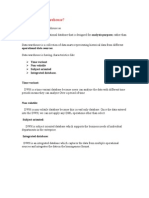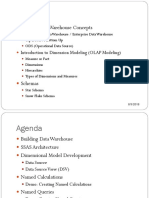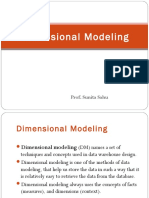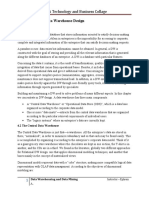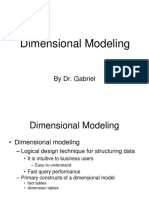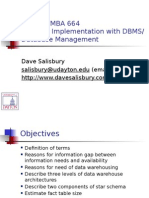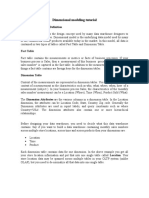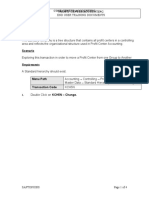0% found this document useful (0 votes)
38 views37 pagesData Warehouse Implementation
The document provides an overview of data warehousing concepts including OLAP vs OLTP, why data warehouses are used, and how to design dimensions and fact tables in a data warehouse. Key topics covered include the differences between OLTP and OLAP systems, using cubes to analyze data, designing star and snowflake schemas, and best practices for dimensions and facts.
Uploaded by
Hossein ShahrianCopyright
© © All Rights Reserved
We take content rights seriously. If you suspect this is your content, claim it here.
Available Formats
Download as PDF, TXT or read online on Scribd
0% found this document useful (0 votes)
38 views37 pagesData Warehouse Implementation
The document provides an overview of data warehousing concepts including OLAP vs OLTP, why data warehouses are used, and how to design dimensions and fact tables in a data warehouse. Key topics covered include the differences between OLTP and OLAP systems, using cubes to analyze data, designing star and snowflake schemas, and best practices for dimensions and facts.
Uploaded by
Hossein ShahrianCopyright
© © All Rights Reserved
We take content rights seriously. If you suspect this is your content, claim it here.
Available Formats
Download as PDF, TXT or read online on Scribd
/ 37






